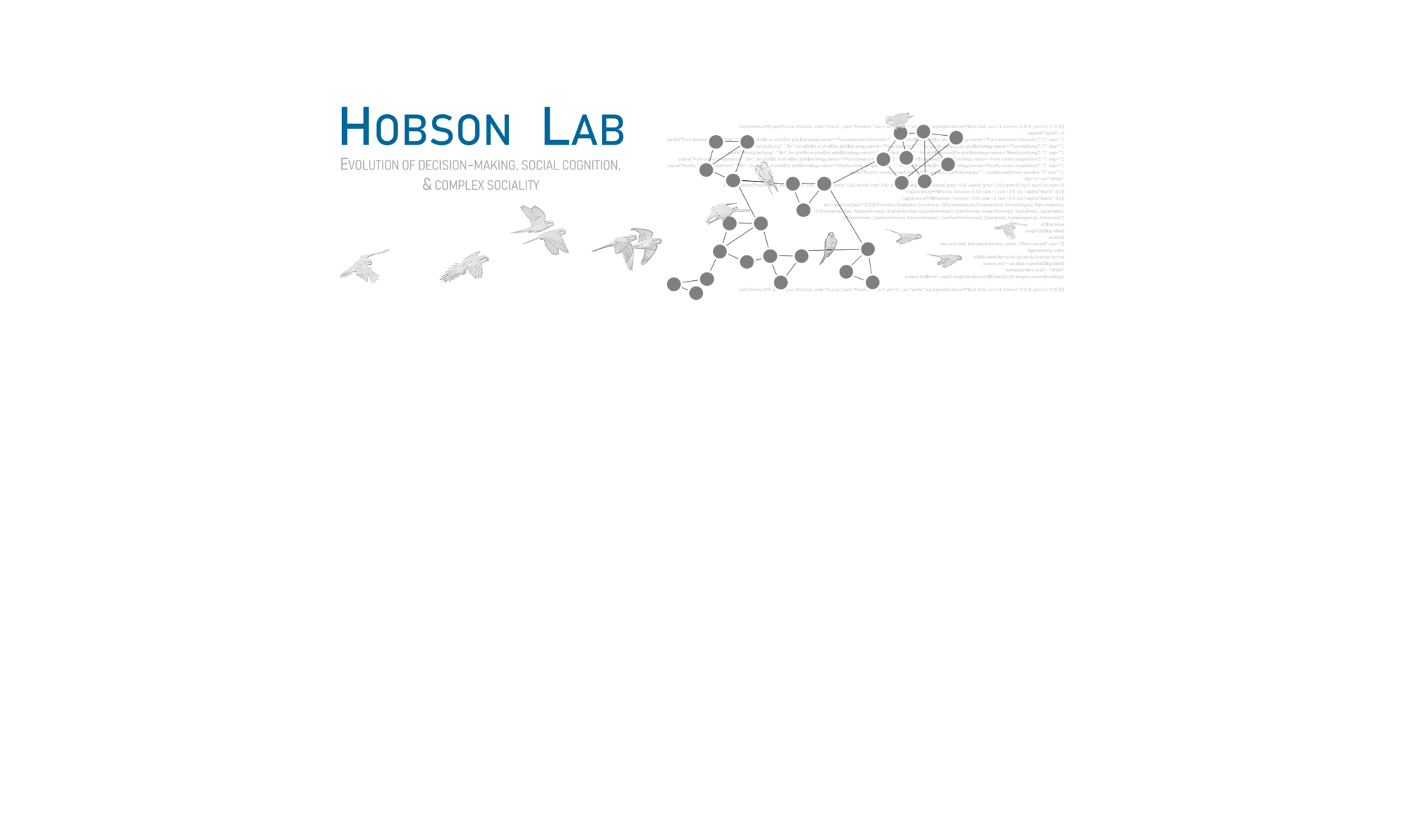We just posted a new preprint “Social manipulations disentangle rank effects of individual characteristics and social history”. This paper was led by Hobson Lab postdoc Annemarie van der Marel, with support from Hobson Lab PhD students Xavier Francis, Claire O’Connell, Chelsea Carminito, and our former postbac Cesar Estien (who is currently a PhD student at UC Berkeley).
Some of my previous work with the parakeets (e.g. https://doi.org/10.1371/journal.pcbi.1004411) showed computational evidence that social history was important in achieving rank – here we confirm this experimentally!
The preprint is available here: https://ecoevorxiv.org/rhx6p/
Abstract
Dominance hierarchies can provide many benefits to individuals depending on their ranks. Individuals can establish rank in these hierarchies from outcomes based on individual characteristics to outcomes based on social interactions and memory, and these drivers are not mutually exclusive. Generally, researchers evaluate the basis of rank by employing correlative methods between individual characteristics and rank. A lack of a correlation does not automatically indicate that social history, rather than individual characteristics, is important in rank emergence. To better disentangle social history and individual characteristics as the basis for rank, we conducted experimental social perturbations on a captive group of 20 monk parakeets (Myiopsitta monachus). We tested whether individuals could re-take their ranks in hierarchies after reintroduction following their removal period from the group. If rank is more an outcome of recent social interactions within a group, a removed individual should not be able to re-take its previous rank following reintroduction. If rank is more of an outcome of individual characteristics, these characteristics should be associated with rank and removed individuals should be able to re-take their ranks following reintroduction. We performed three perturbations that consisted of an eight-day removal and an eight-day reintroduction period of three unique top-ranked focal birds. We found that none of the focal birds could regain their previous rank following reintroduction. We also found that an individual characteristic (body mass) was largely unassociated with rank. Our repeated samples of body mass suggest that this characteristic may be responsive to rank, rather than a factor driving rank. Combined with previous results, this experiment supports that rank in monk parakeet dominance hierarchies is more likely to be an emergent outcome of past interactions, memory, and observing agonistic interactions rather than based strongly on individual characteristics.





